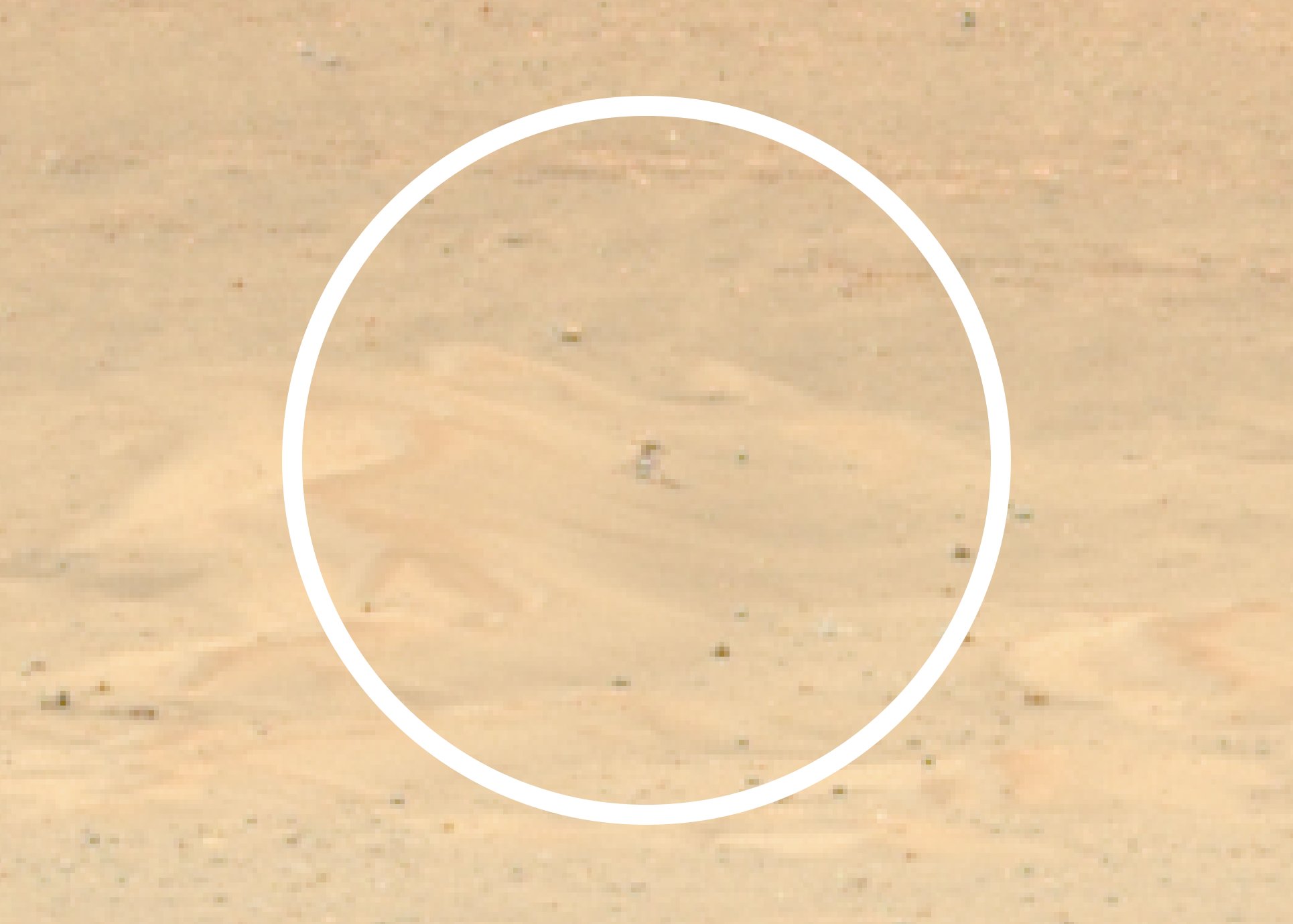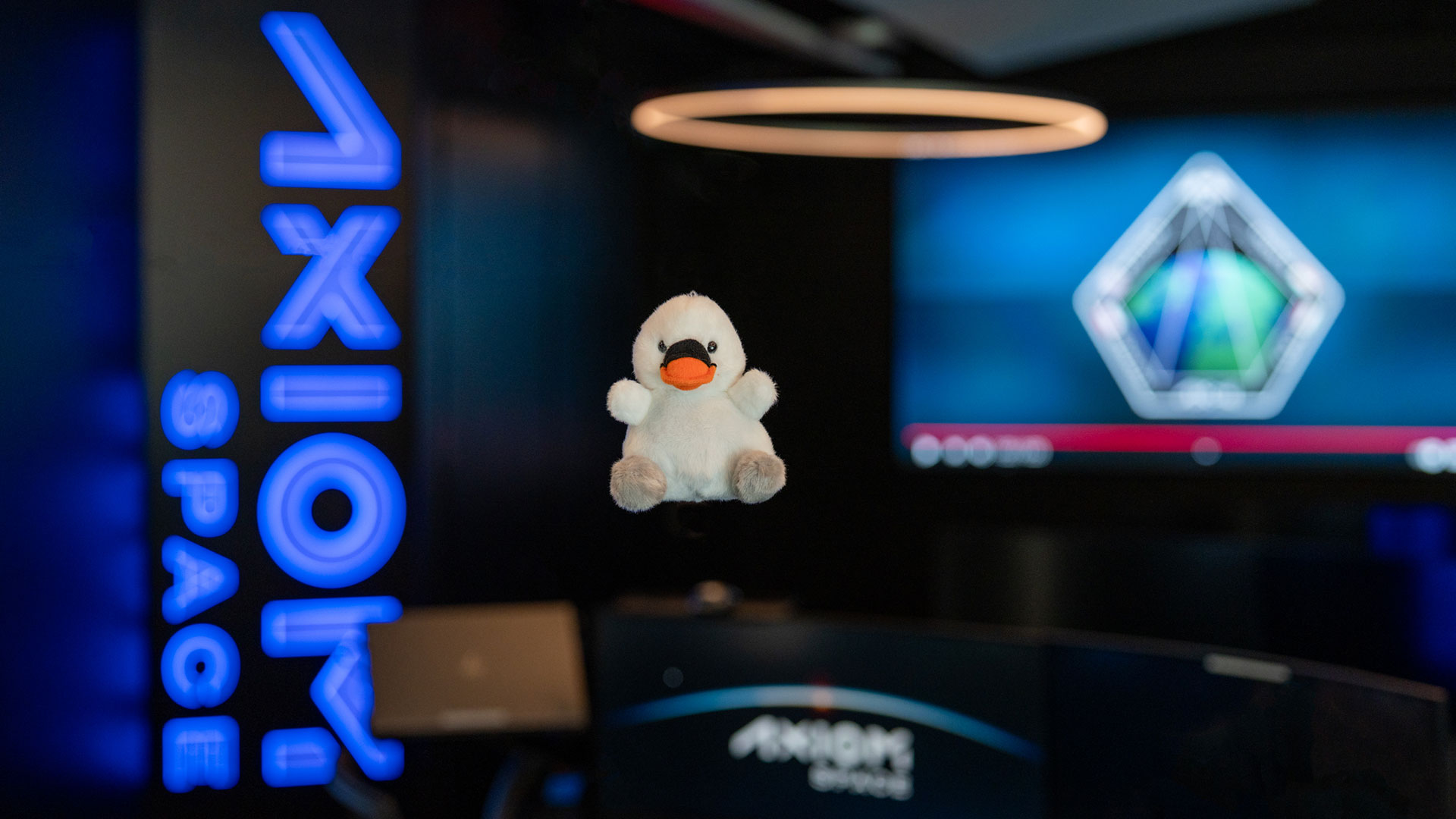
NASA's Perseverance rover just caught another glimpse of its pioneering robotic cousin.
The car-sized Perseverance snapped a photo recently of the Ingenuity helicopter as the 4-pound (1.8 kilograms) rotorcraft sat atop a Red Planet sand dune.
"The #MarsHelicopter and I are closer together than we've been in a while, and guess who I spotted resting on a dune between flights. Can you believe Ingenuity is gearing up for Flight #39?" the Perseverance team said via Twitter on Wednesday (Jan. 11), in a post that featured a photo of the little chopper.
Related: Soar over Mars rover tracks with Ingenuity helicopter (video)

Ingenuity and Perseverance landed together inside Mars' Jezero Crater in February 2021. The 28-mile-wide (45 kilometers) Jezero hosted a big lake and a river delta long ago, and Perseverance is scouring the area for signs of ancient life on Mars.
The six-wheeled robot is also collecting and caching dozens of samples for future return to Earth. For the past few weeks, Perseverance has been caching some of its sample tubes in a "depot" in a patch of Jezero's floor that the mission team calls Three Forks.
Perseverance has so far deposited six of a planned 10 sample tubes in the Three Forks depot, which serves as a backup in case the rover isn't healthy enough to haul material to a future NASA lander later this decade. A rocket aboard that lander will launch the samples to Mars orbit, where they'll be picked up by a European spacecraft and hauled back to Earth. The samples could land here as early as 2033.
Get the Space.com Newsletter
Breaking space news, the latest updates on rocket launches, skywatching events and more!
The depot samples are doubles; Perseverance is keeping a set of material drilled from the same target rocks on its body. If need be, two Ingenuity-like helicopters that will launch with the future lander will fly over to Three Forks and grab the sample tubes there one by one.
Ingenuity is currently serving as a scout for Perseverance, helping the rover team pick the best routes through the rough Jezero landscape and identify promising outcrops for in-depth study.
This work is part of the chopper's extended mission. Not long after landing, Ingenuity aced its primary five-flight campaign, showing that powered flight is possible in the thin Martian atmosphere.
Ingenuity conducted its 39th Martian flight on Wednesday, covering 459 feet (140 meters) of ground over the course of nearly 79 seconds. To date, the chopper has flown a total of 25,690 feet (7,830 m) on Mars and stayed airborne for more than 64 minutes, according to the mission's flight log.
Perseverance has captured footage of Ingenuity before. The rover snapped photos of the chopper just after it deployed onto Jezero's floor, for example, and also recorded video of Ingenuity's 13th flight, which took place in September 2021.
Mike Wall is the author of "Out There" (Grand Central Publishing, 2018; illustrated by Karl Tate), a book about the search for alien life. Follow him on Twitter @michaeldwall. Follow us on Twitter @Spacedotcom and on Facebook.
Join our Space Forums to keep talking space on the latest missions, night sky and more! And if you have a news tip, correction or comment, let us know at: community@space.com.

Michael Wall is a Senior Space Writer with Space.com and joined the team in 2010. He primarily covers exoplanets, spaceflight and military space, but has been known to dabble in the space art beat. His book about the search for alien life, "Out There," was published on Nov. 13, 2018. Before becoming a science writer, Michael worked as a herpetologist and wildlife biologist. He has a Ph.D. in evolutionary biology from the University of Sydney, Australia, a bachelor's degree from the University of Arizona, and a graduate certificate in science writing from the University of California, Santa Cruz. To find out what his latest project is, you can follow Michael on Twitter.
